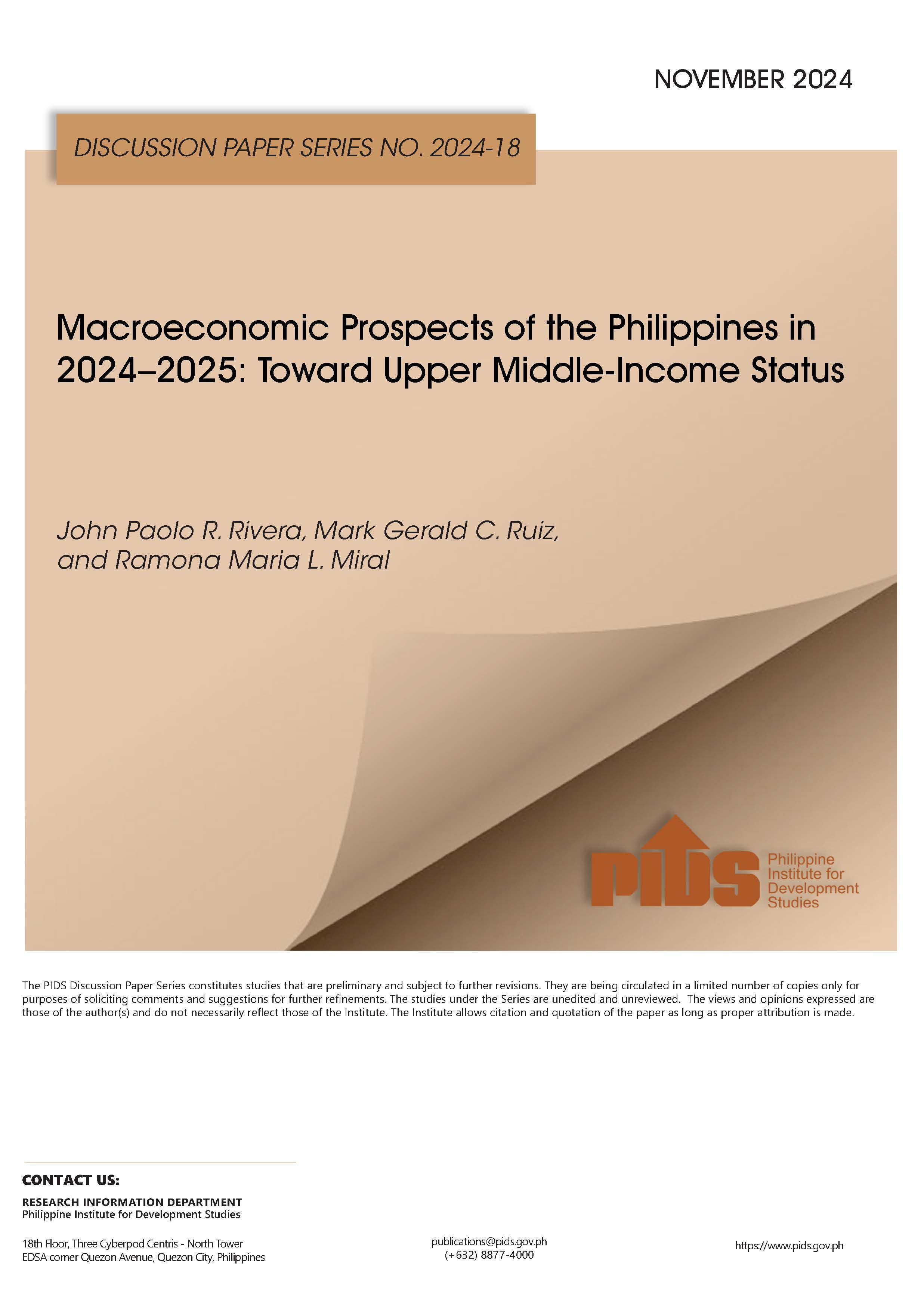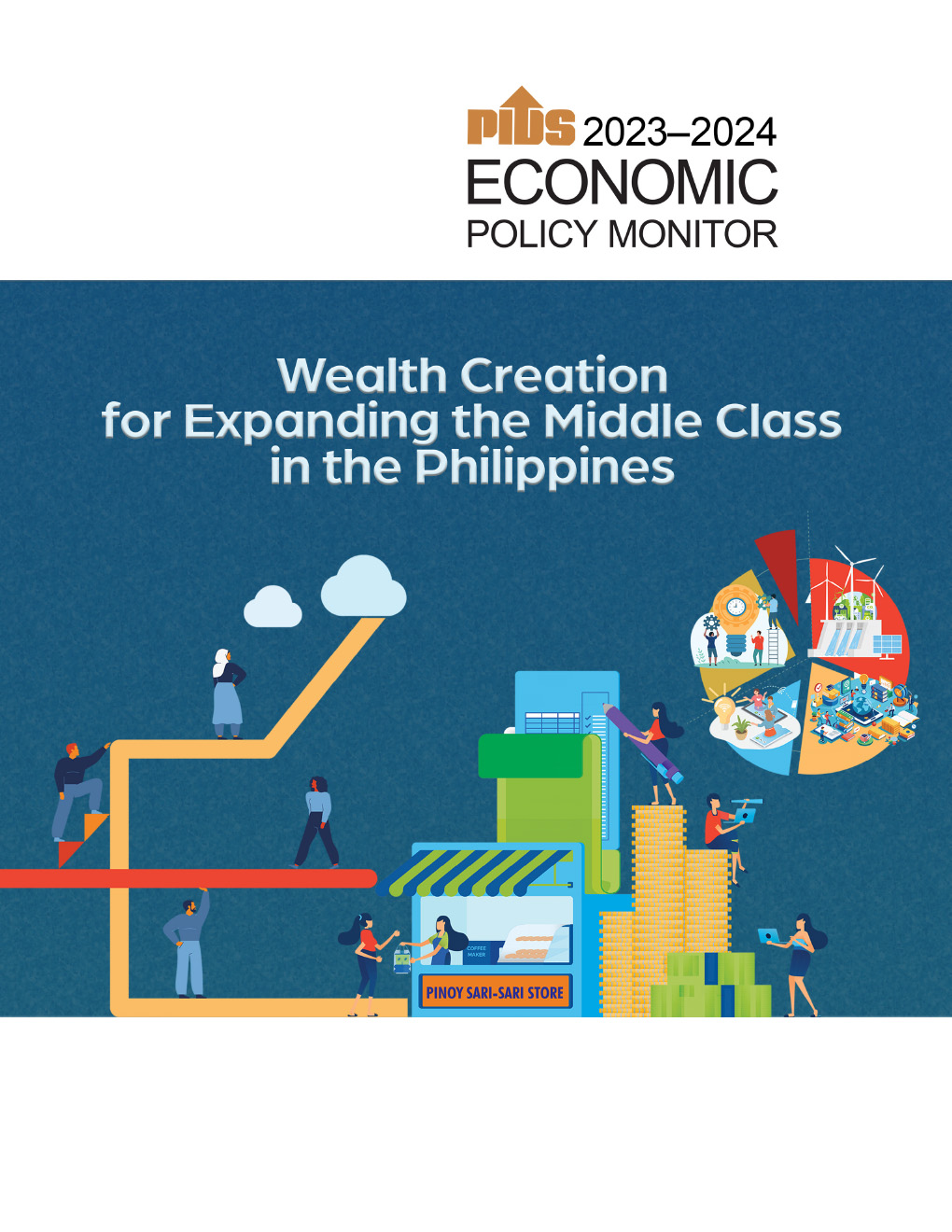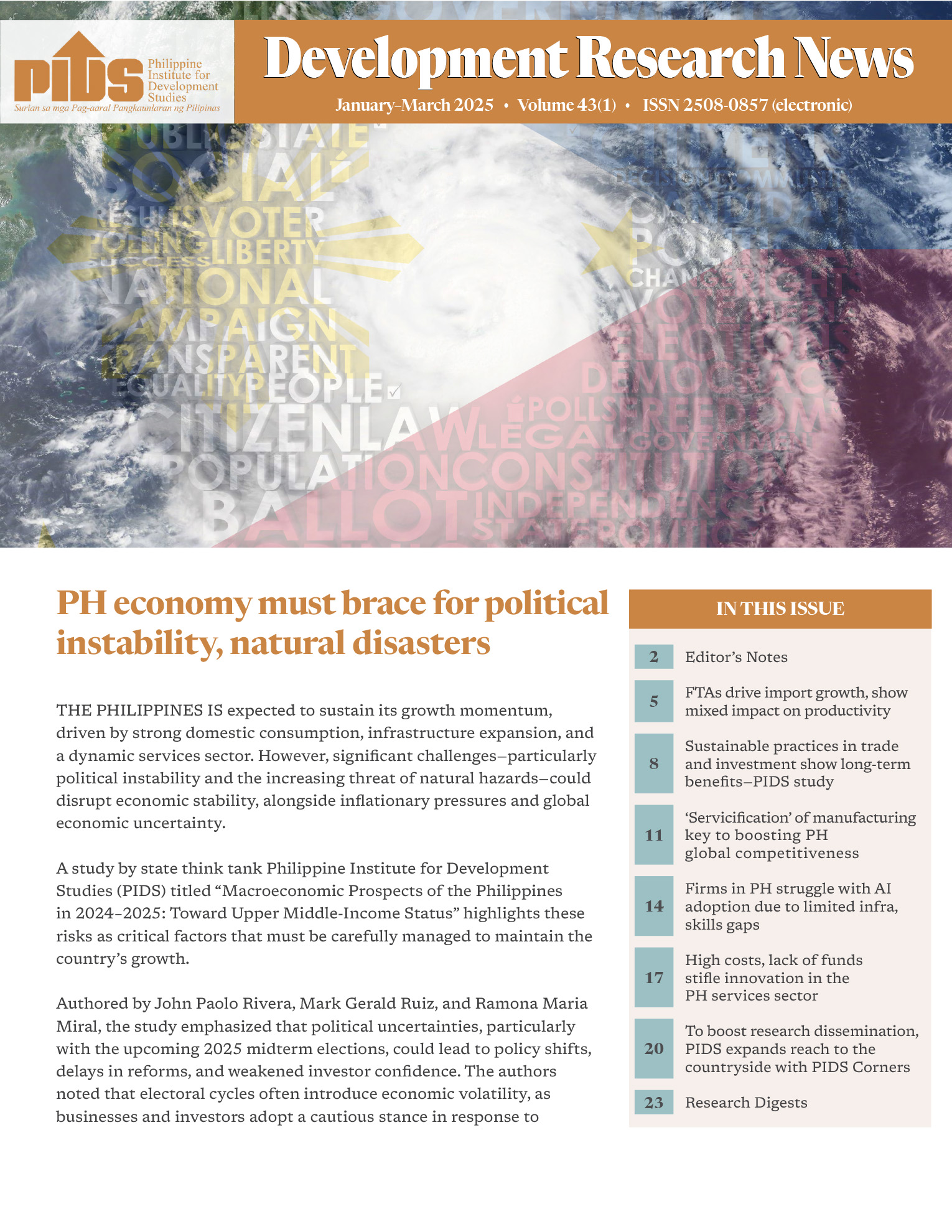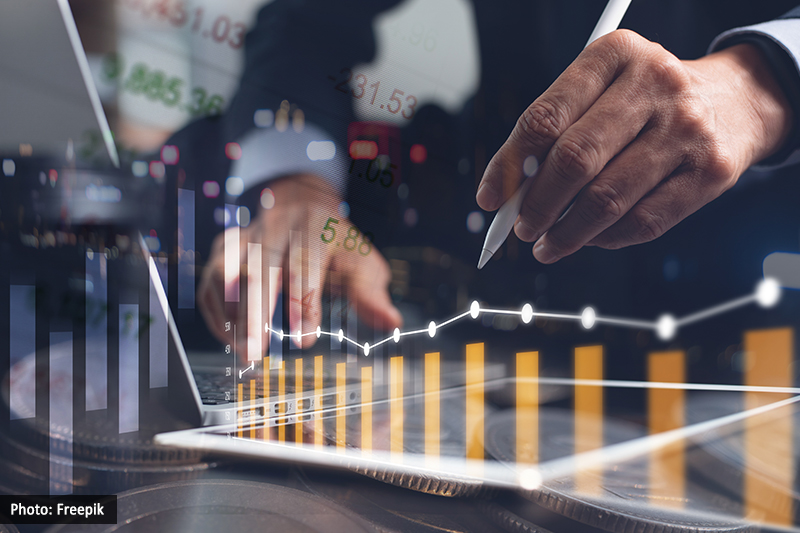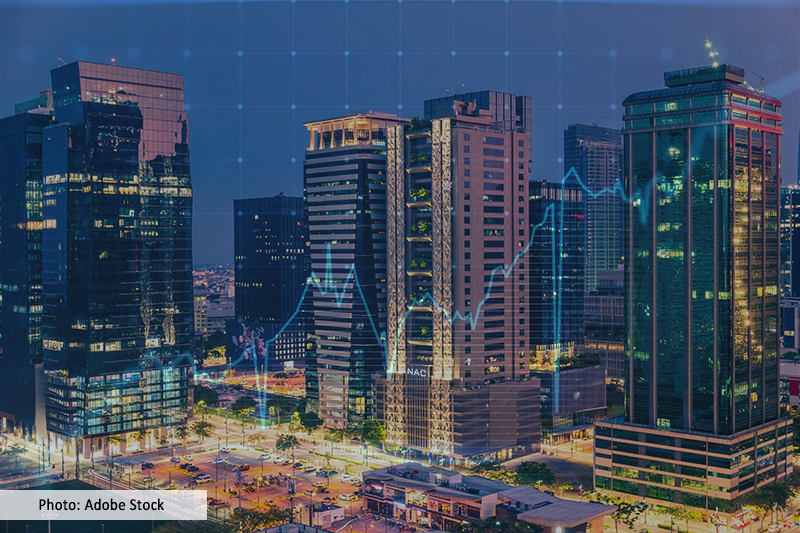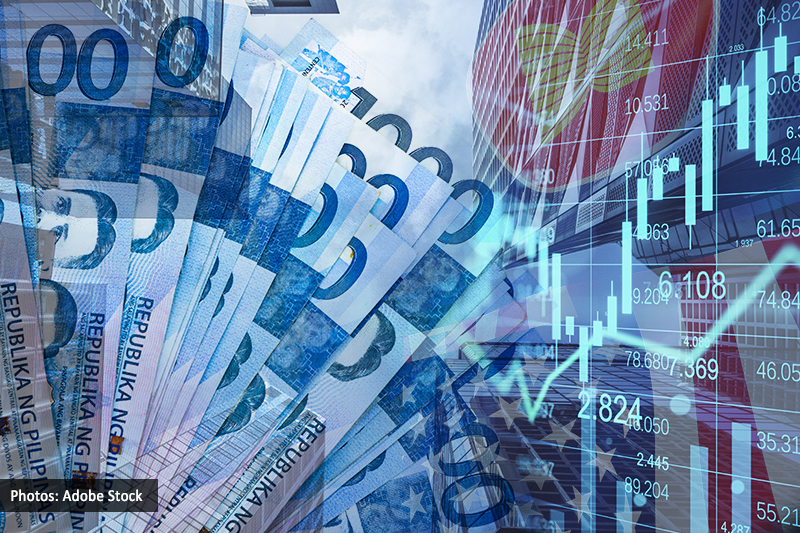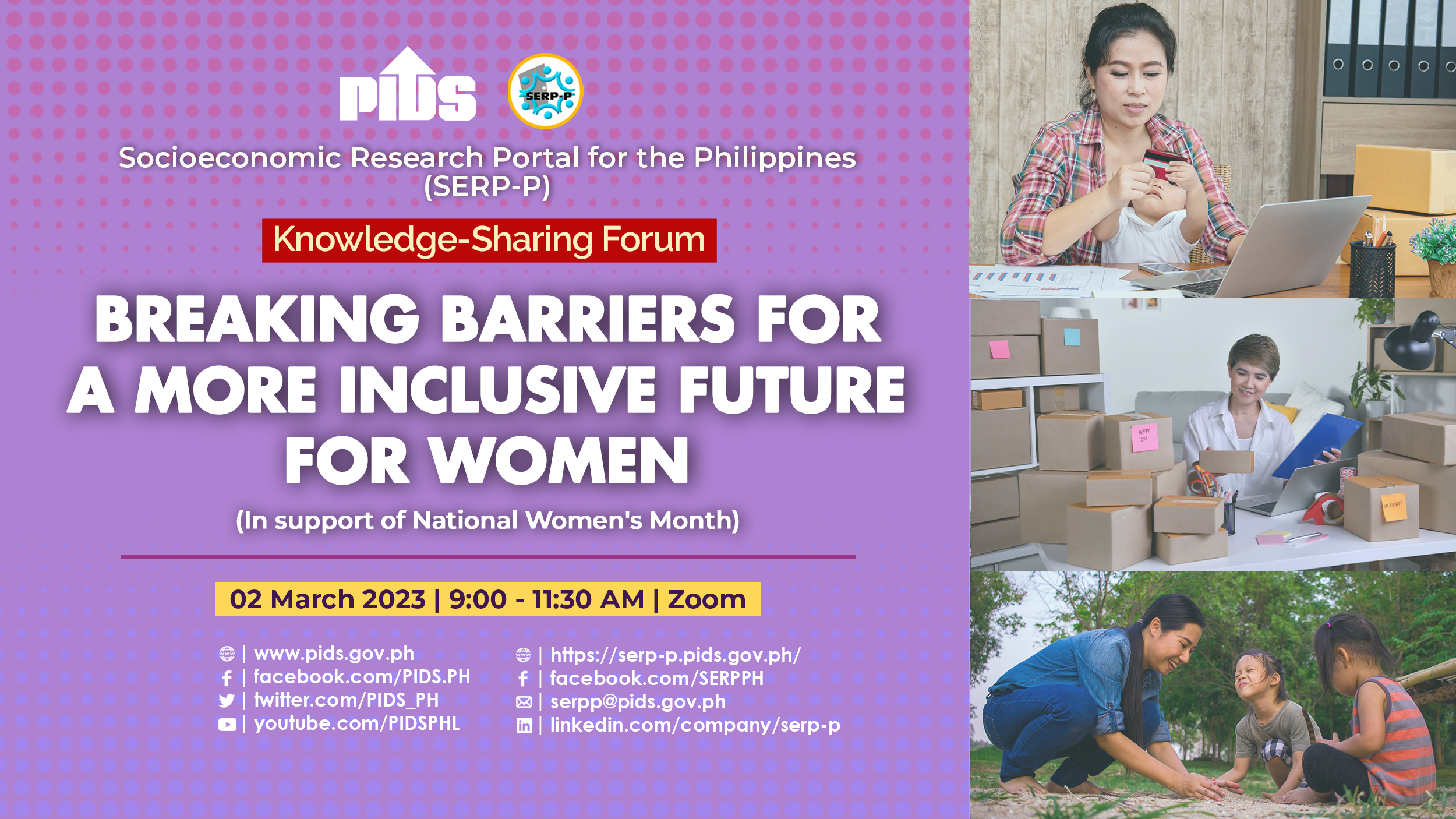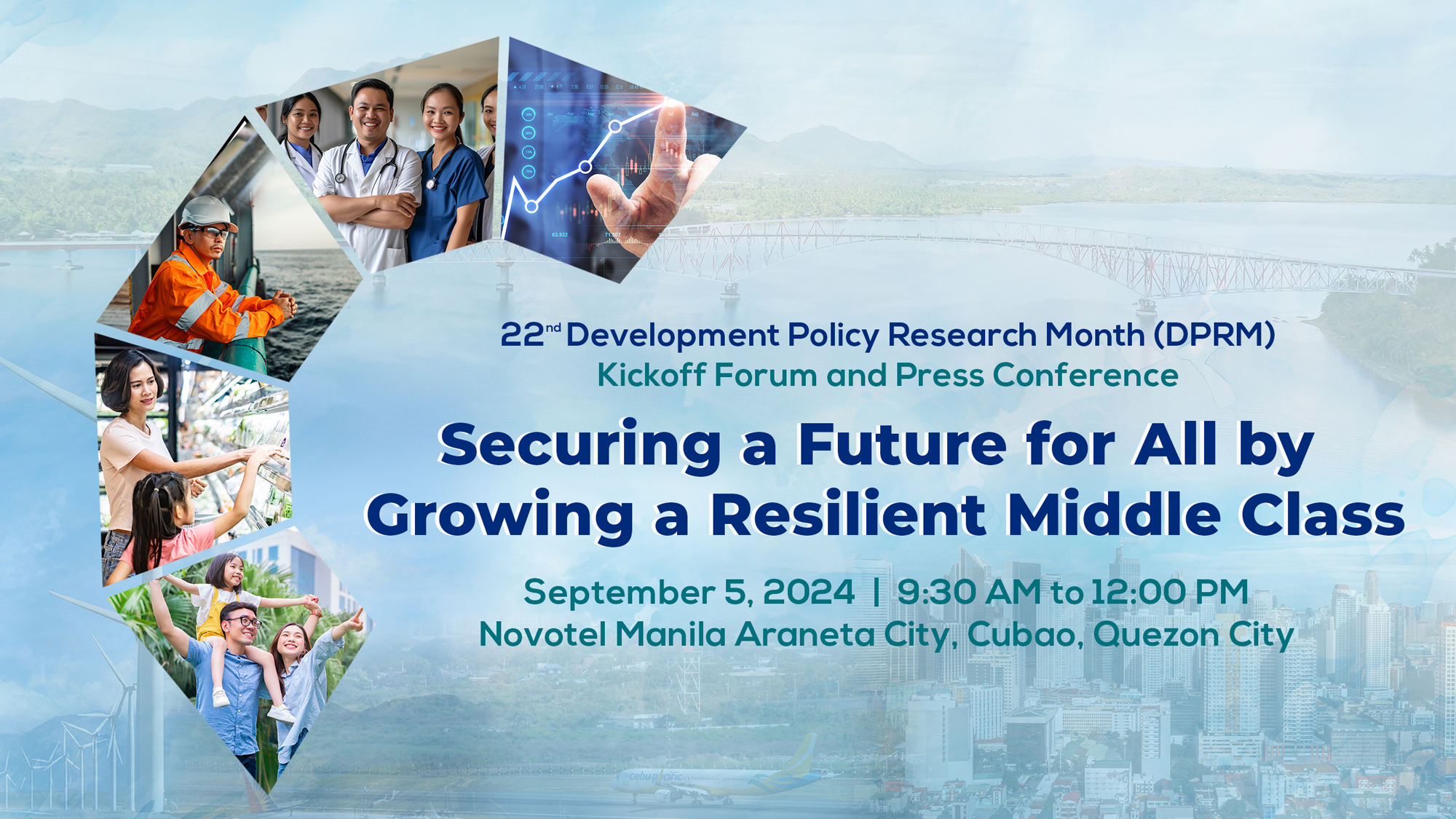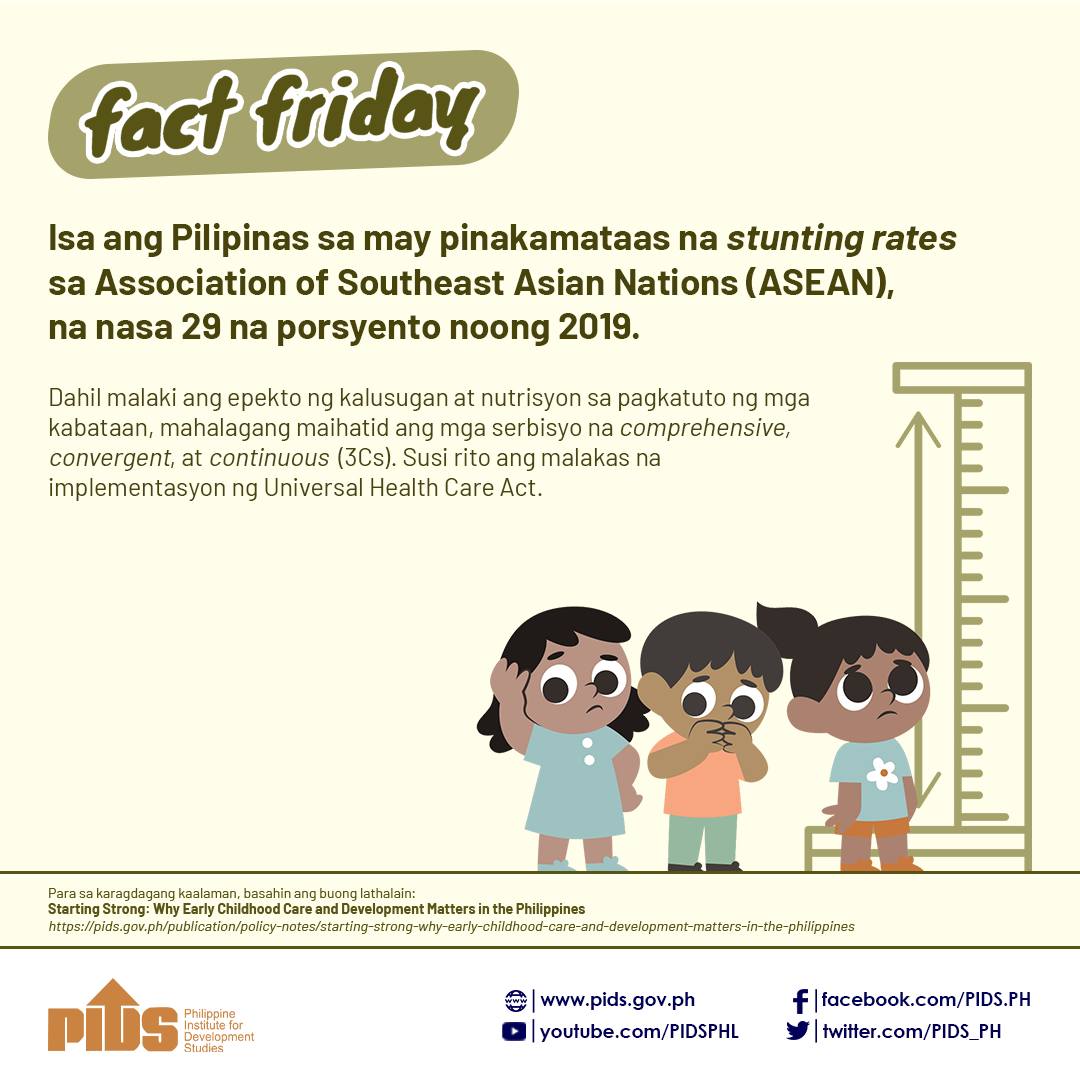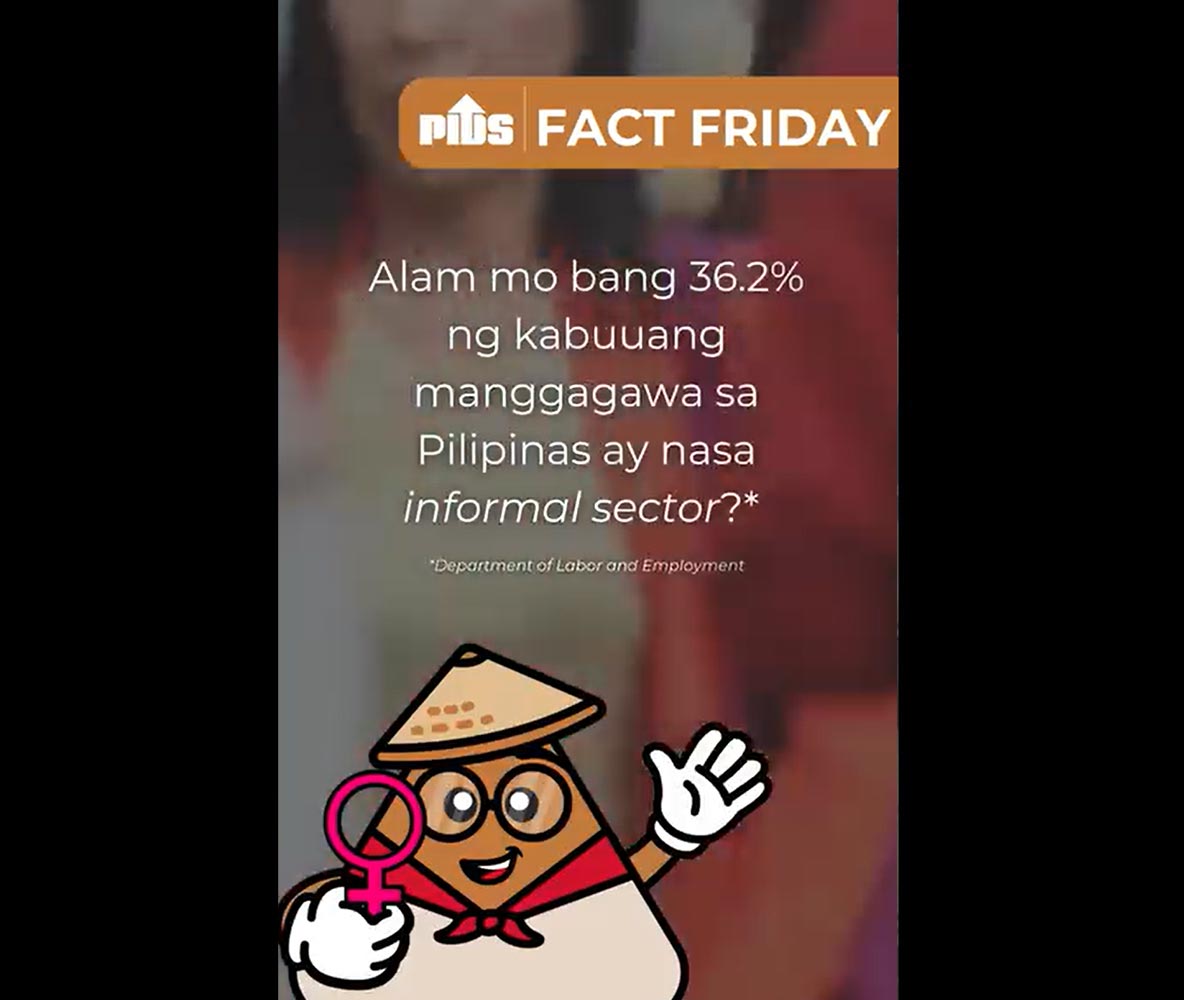
The Philippines is set to achieve upper middle-income status if it can sustain its growth trajectory and meet key targets through strategic investments, policy reforms, and a favorable economic environment. The government's ability to implement reforms, manage inflationary pressures, and boost investor confidence will determine whether it can sustain long-term growth and economic stability.
Projections from the Philippine Institute for Development Studies (PIDS) reinforce this optimism, forecasting a 6.1% year-on-year Gross Domestic Product (GDP) growth for 2025, bolstered by easing inflation and policy rates that will enhance consumption and investment. This anticipated growth is further fueled by rising household consumption, supported by improved employment, steady remittance inflows, and election spending.
These positive projections are detailed in the PIDS study titled “Macroeconomic Prospects of the Philippines in 2024–2025: Toward Upper Middle-Income Status”. It identifies key drivers of progress, such as enhanced macroeconomic stability, effective governance, and deeper integration into international trade and investment networks. Authored by PIDS Senior Research Fellow Dr. John Paolo Rivera, Research Specialist Mark Gerald Ruiz, and Research Analyst Ramona Maria Miral, the study also underscores the critical roles of the robust Information Technology-Business Process Outsourcing (IT-BPO) sector and the government’s Build, Better, More infrastructure program in driving the country’s economic recovery.
Central to this recovery is consumer spending, which remains a major growth driver. Backed by a youthful and growing population, stable inflation, and consistent remittances from overseas Filipino workers (OFWs), consumer demand is further strengthened by the return of more Filipinos to the workforce and improving wages. Together, these factors create a solid foundation for sustained economic growth.
Despite these promising trends, the study highlights challenges that could temper growth in 2025. Chief among these is the global economic slowdown, which poses risks to the demand for Philippine exports. “The Philippines may see weaker external demand for its exports, particularly in electronics and semi-conductors, which are major contributors to its GDP but are heavily dependent on global supply chains,” the authors noted.
To mitigate these risks, the Philippines must strengthen regional ties within the Association of Southeast Asian Nations (ASEAN) and expand trade partnerships with the United States, China, and other global players. The Regional Comprehensive Economic Partnership (RCEP) is crucial in facilitating smoother trade flows and enhancing the country’s access to markets across the Asia-Pacific region.
Inflationary pressures from rising oil prices and supply chain disruptions, coupled with the worsening effects of climate change, pose additional challenges. Political uncertainties surrounding the 2025 midterm elections may also delay investments and disrupt policy reforms. Skills mismatches in the labor market and the country’s dependence on remittances could further limit economic growth potential. “Failure to empower the labor force with the skills required for the evolving job market could limit productivity and economic potential,” the authors stressed.
But the government can mitigate economic risks and headwinds. Promoting economic stability and resilience is key to achieving upper middle-income status by 2025 and avoiding the middle-income trap. To sustain long-term growth, domestic and foreign investments must be increased in infrastructure, technology, and industry. Improving productivity in agriculture, manufacturing, and services will also be vital to boosting overall economic output.
Further, continued reforms in taxation, business regulations, and governance will help attract investments and stimulate economic activity. Strengthening climate resilience in agriculture, infrastructure, and urban planning is also essential to protecting long-term growth from the impacts of climate change. Climate-conscious investments are needed to ensure sustainable and inclusive development.
With the appropriate policy responses and ongoing investments in infrastructure, education, and climate resilience, the Philippines has the potential to not only recover but exceed its pre-pandemic growth trajectory.
Overall, the Philippine economy continues to face multiple headwinds that could disrupt its growth trajectory. While the economy is on track for steady growth, the abovementioned risks must be carefully managed.
“A coordinated effort from all sectors is essential to ensuring the Philippines can sustain growth amid global and domestic uncertainties on its path toward upper-middle-income status,” the authors highlighted.
Read the full study at https://bit.ly/pidsdp2024-18. ###

